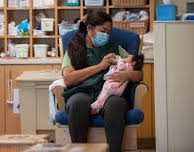
Recreational cannabis is picking up steam…and legal rights. On Election Day, November 3, 2020, New Jersey, Arizona, South Dakota, and Montana joined the eleven other states where pot is legal to bring our national total up to fifteen. It appears to be only a matter of time until recreational marijuana will be legal throughout the United States. As a pelvic floor physical therapist with a one track mind, I am curious about how the inevitable changes will converge with science and medicine, especially in the arena of women’s health and fertility.
A recent National Institutes of Health (NIH) study led by Dr. Sunni Mumford (published on January 11, 2021) revealed that women who recreationally use cannabis products such as marijuana or hashish may experience greater challenges conceiving a child compared to women who do not use marijuana. The study focused on women who had previously experienced one or two miscarriages.
The statistics that emerged from their research is as follows:
- Women who had used cannabis within several weeks prior to or while trying to conceive were 41% less likely to conceive than non-users
- 42% of active users became pregnant during the study vs. 66% of non-users
- Miscarriage rates were relatively similar between the two groups
Another noteworthy difference between the two groups involves the reproductive hormones associated with ovulation. Cannabis users had elevated levels of luteinizing hormone. Also, the researchers suggested that cannabis usage may negatively impact the uterine lining, which could interfere with successful embryo implantation.
Although the researchers acknowledged the small sample size in the study, the statistics are interesting enough to give pause until further research can be conducted. Furthermore, considering that it takes two to tango, it would be fascinating to explore whether or not a partner’s usage of cannabis affects fertility rates, a piece of the puzzle that was not addressed in Mumford’s research.
Until further research can verify and delve deeper into this topic, feel free to digest and incorporate this information into your life as you see fit. May everyone, especially women trying to conceive, find healthy outlets to relax, revitalize, and enjoy themselves.
https://academic.oup.com/humrep/article-lookup/doi/10.1093/humrep/deaa355



